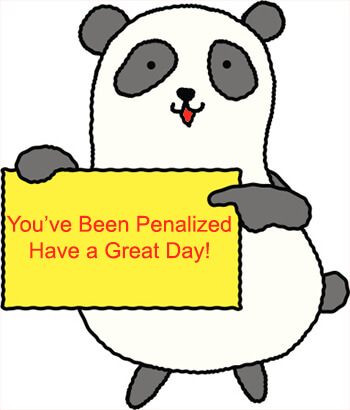How Thin Content Hurts Your Website
Thin content refers to non-search engine friendly content that offers little or no value to the search engine user. Google determines what constitutes thin content, which may apply to either an entire website or to individual pages on an otherwise acceptable website.
Google’s Panda update specifically addressed thin content and hit some members of the digital marketing community particularly hard – online ecommerce giant eBay lost about 75 percent of its organic rankings literally overnight. Ranking penalties may either result from an algorithm update or could come in the form of a manual penalty. However if the penalty hits your site, you can kiss a significant portion of traffic and potential profits goodbye.
The moral of this story? Make sure that you’re giving Google what it wants: unique, high-quality content relevant to the term being searched and plenty of it.
Google Penalties are only Part of the Problem
Aside from the loss of Google ranking love, thin website content may discourage potential customers from doing business with you. If your content fails to provide the quality, in-depth information that search engine users are looking for, they’ll most likely visit one of your competitors.
- When frustrated users can’t find what they need on your site, they quickly “bounce” off your site and move on to the next. This increases your bounce rate, which does not go unnoticed by Google, and your rankings will drop even further.
- Consumers who have an unhappy experience with your website are not going to be sharing your thin content with their social media friends, and you’re going to lose out on yet another source of traffic and potential revenue.
How to Identify Thin Content
If you suspect that your website contains thin content, don’t wait for a penalty to rob you of your hard-earned traffic; take a proactive stance by removing or rewriting your problem content. If you have been hit by either an algorithm or manual penalty, you’re going to need to take corrective action before you can expect to see a return of your previous rankings.
Using a combination of the Google Webmaster Tool and Google Analytics, examine each of your articles and blog posts. Make a list of potential thin content problems based on
- Content with little or no traffic. Consider removing or rewriting anything that doesn’t attract at least 10 visits per month.
- Pages that add no value to either your reader or to Google search such as Tags, Categories, Paginated Pages; these can be deleted immediately.
- Duplicate content pages.
- Low word count articles and pages. Ideally, your content should contain a minimum of 500 words.
- Content with outdated or broken links.
Fixing Thin Content
- Before you remove any thin content, check for any inbound links. A thin article or post that contains a relevant and authoritative backlink could be beefed up with a rewrite and the quality backlink saved.
- Remove the obvious “no brainer” pages and posts that you don’t consider worthy of a rewrite.
- When doing an article rewrite, make sure that you work from an updated list of target keywords that are currently driving traffic to your website.
- Wherever possible, add graphics or a video to your article or post to boost viewing and engagement.
- Don’t forget to share your “new and improved” content across your social media and bookmarking platforms.










